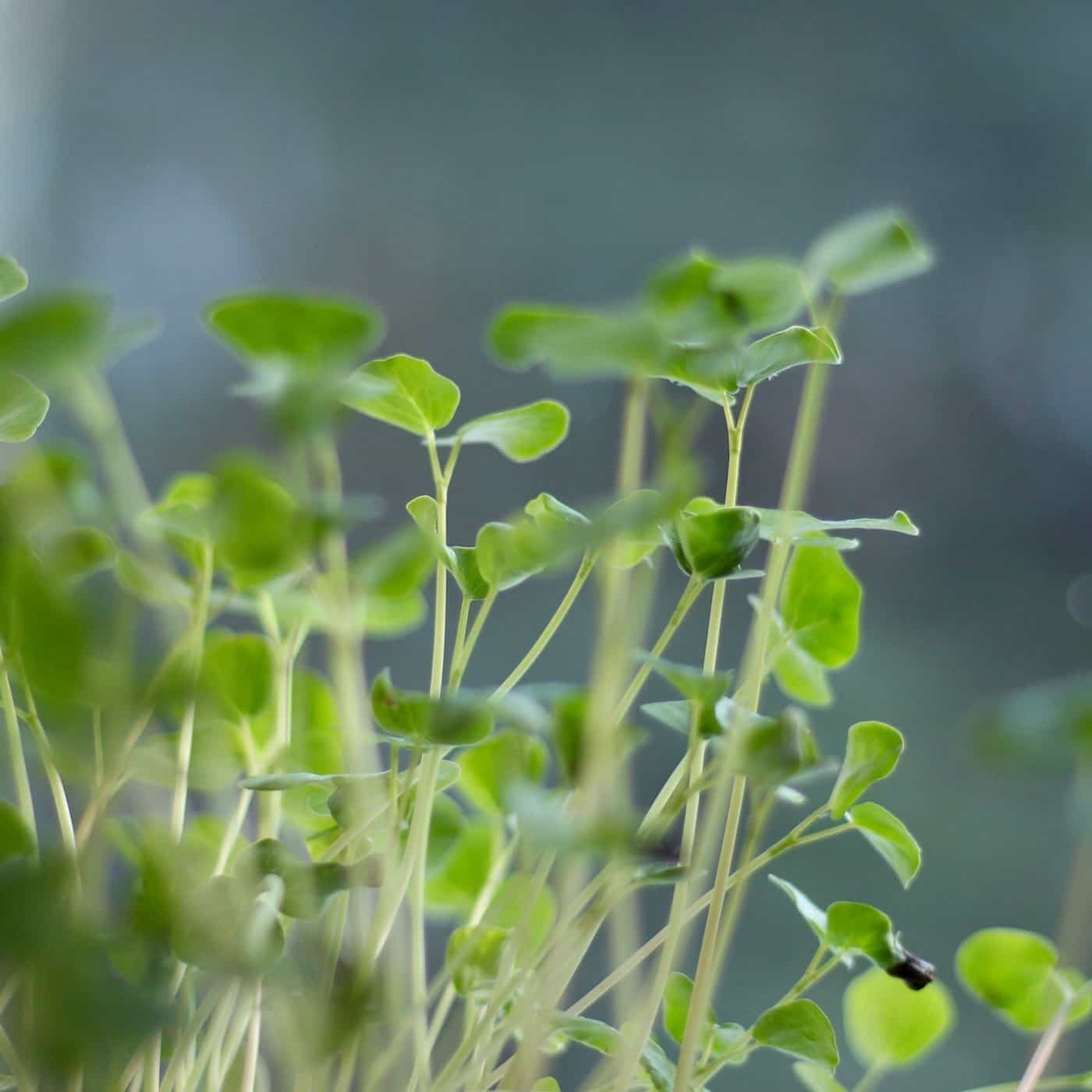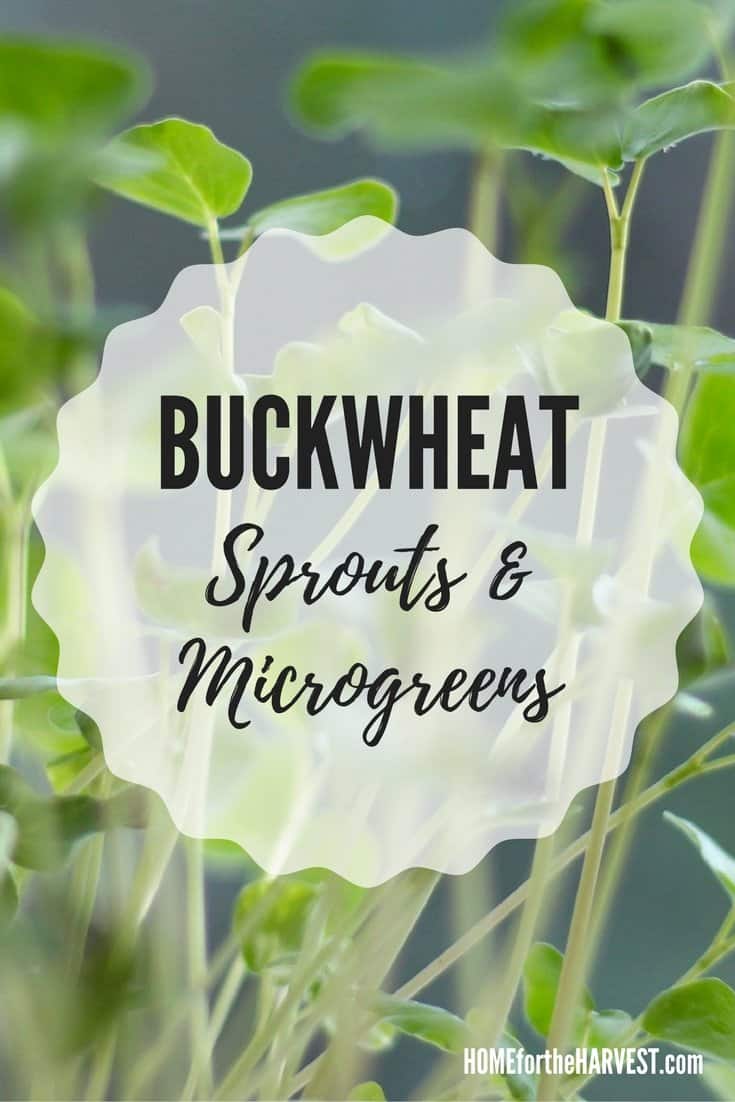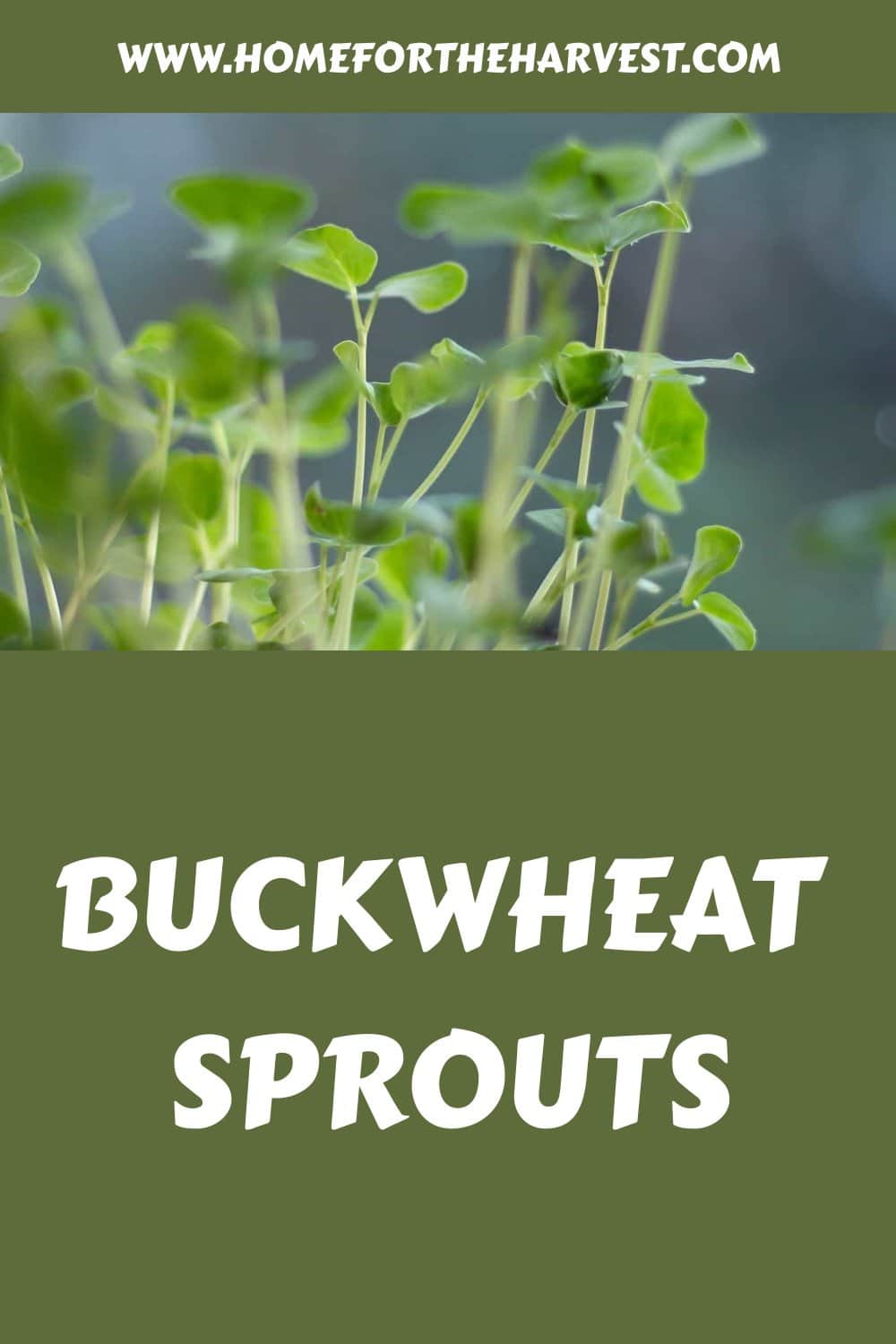Buckwheat sprouts are very affordable and easy to grow. The seeds are easy to sprout inside a mason jar. You just soak the seeds (buckwheat groats) for 4-8 hours and then rinse and drain them twice daily for a couple of days.
I’ve been growing these tasty fresh sprouts for over a decade. With my years of hands-on experience, I’m here to guide you through the nuances of growing buckwheat sprouts, ensuring that you reap their full benefits.
In this article, we’ll explore the essential steps in sprouting buckwheat, the common pitfalls, and, most importantly, how to make the most out of these little gems. Stick with me; you’ll be a sprouting maestro in no time.
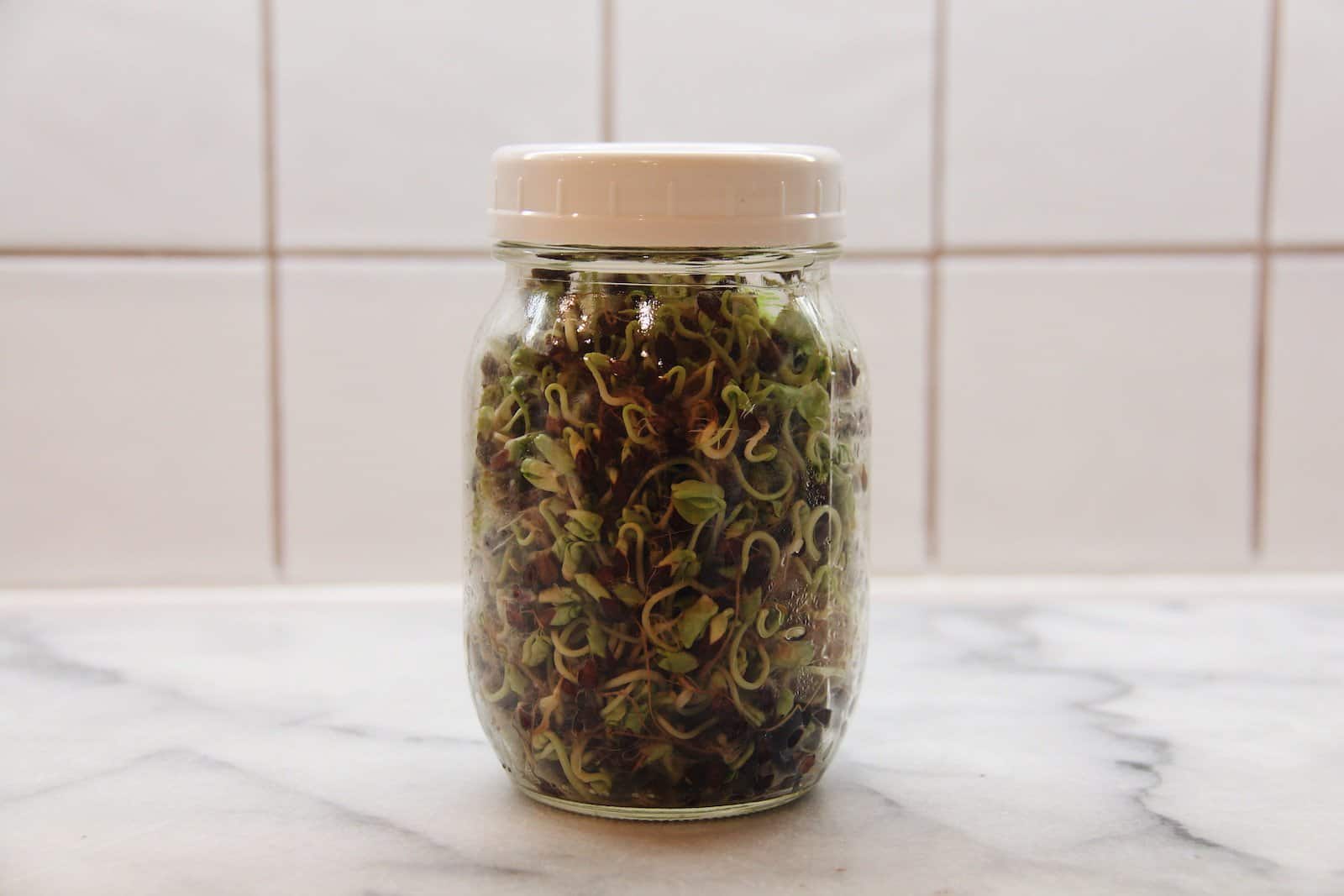
Buckwheat sprouting basics
Buckwheat isn’t actually wheat at all. The buckwheat plant is related to rhubarb and sorrel rather than grass crops. Buckwheat plants grow stalks that hold small edible seeds. Each buckwheat seed is shaped like a tiny pyramid. It’s crucial to use raw, hulled buckwheat as roasted buckwheat, known as kasha, will not sprout. When eaten, the seeds have a nutty deliciousness.
Soaking the buckwheat groats starts the sprouting process. The soaking water initiates the germination process, breaking down enzyme inhibitors and making the nutrients more available. Buckwheat groats are typically soaked in water for 6 to 12 hours.
After the soaking period, you’ll notice a gooey substance on the groats. This is perfectly normal and is the result of starches being released. Rinsing the groats thoroughly until the water runs clear will remove this.
Post-soaking, the buckwheat is drained and set in a sprouting tray or jar. Over the next 2 to 3 days, the groats should be rinsed and drained 2 to 3 times daily to prevent mold growth and to provide them with the (fresh) moisture needed to sprout.
You’ll know your buckwheat is ready when tiny sprouts, typically about a quarter of an inch long, emerge from the groats. If you like microgreens, you can also lay some freshly sprouted seeds on a tray of potting mix and grow your own buckwheat microgreens.
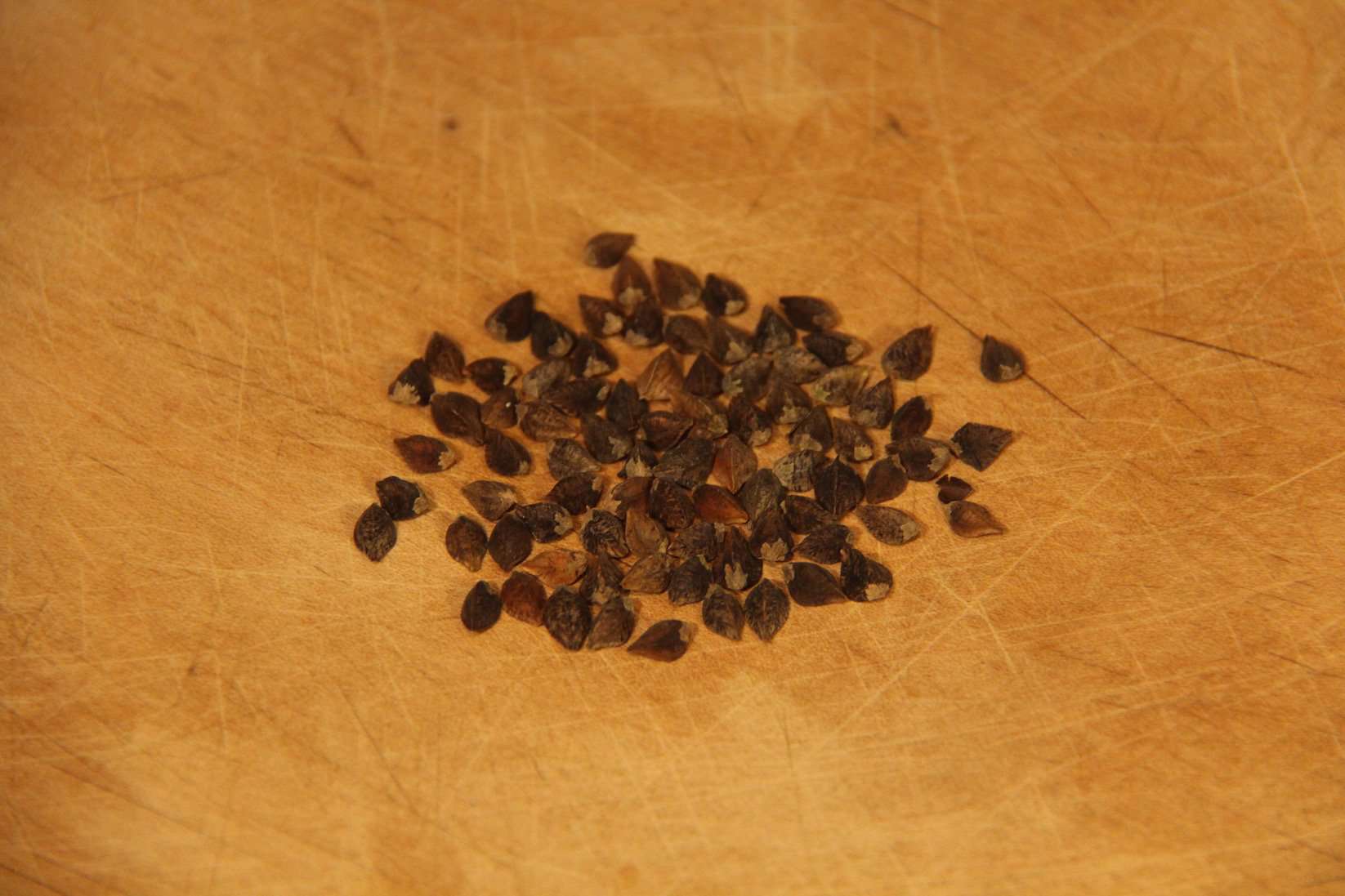
Enjoying buckwheat sprouts
Buckwheat seeds are very affordable, widely available, and sprout reliably. The buckwheat sprouts take a bit to grow (approximately ten days), but it’s worth it. Sprouted buckwheat is sturdy and lasts in the fridge for several weeks.
Sprouted buckwheat can be enjoyed in a multitude of ways. They add a delightful crunch to salads, blend into smoothies, or even dehydrate to make raw granolas or crackers.
I add them to smoothies, put them on sandwiches, and mix them into salads. Buckwheat sprouts have a very mild yet fresh flavor, which makes them easy to sneak into many foods for an added crunchy, fresh bonus (I honestly love these sprouts so much that sneaking them in isn’t much of an issue for me anymore).
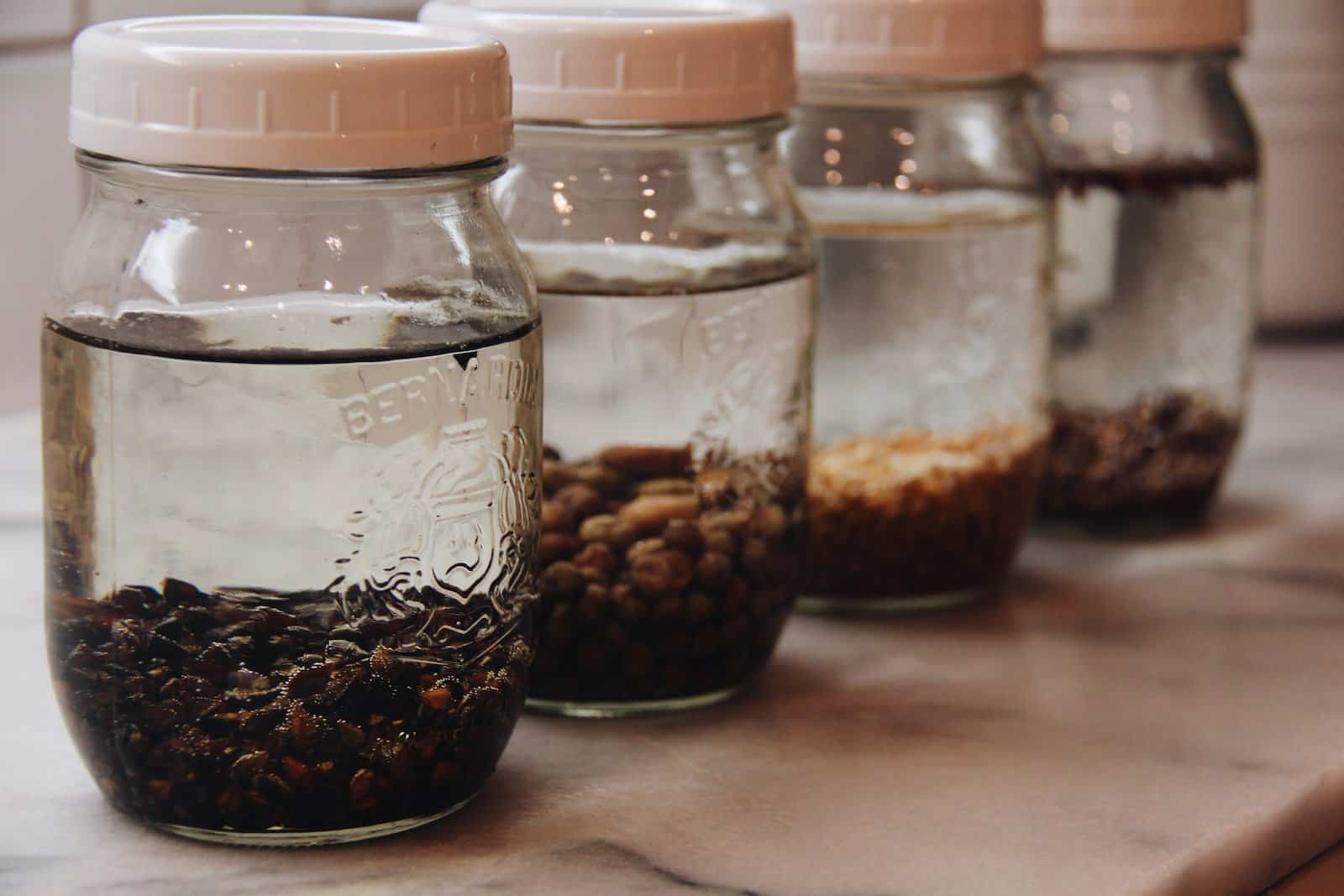
Sprouting buckwheat is just like sprouting other sprouts or microgreens. To be honest, I prefer to grow buckwheat as microgreens rather than sprouts. I find they become established more easily in soil and are more versatile to use…but both methods of sprouted buckwheat are delicious!
Growing buckwheat sprouts into buckwheat microgreens
Here are instructions for growing buckwheat microgreens. It’s basically the same as growing buckwheat sprouts, except that once the seeds have started to grow little roots, you put the seeds on a tray of potting mix. Pretty similar! Also, see these instructions on growing microgreens of all types.


